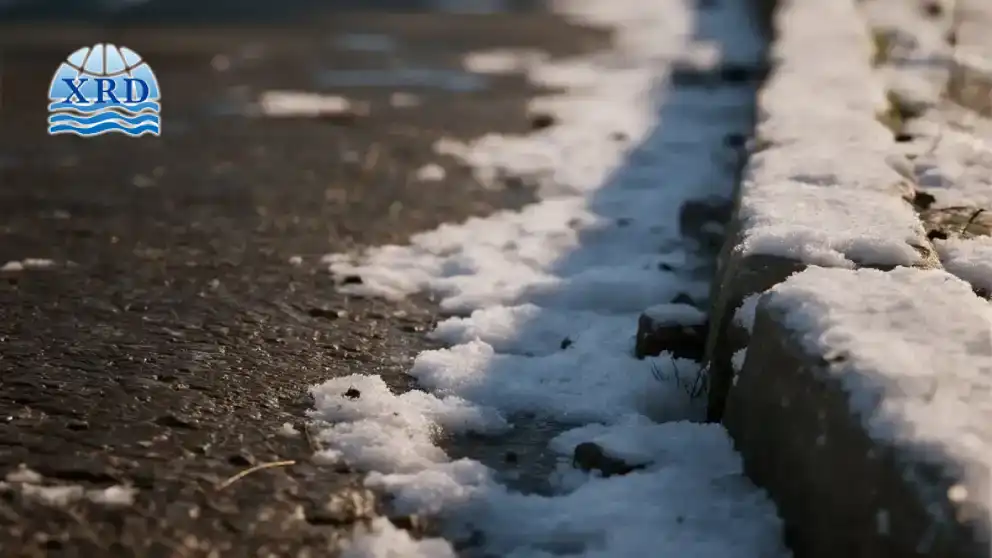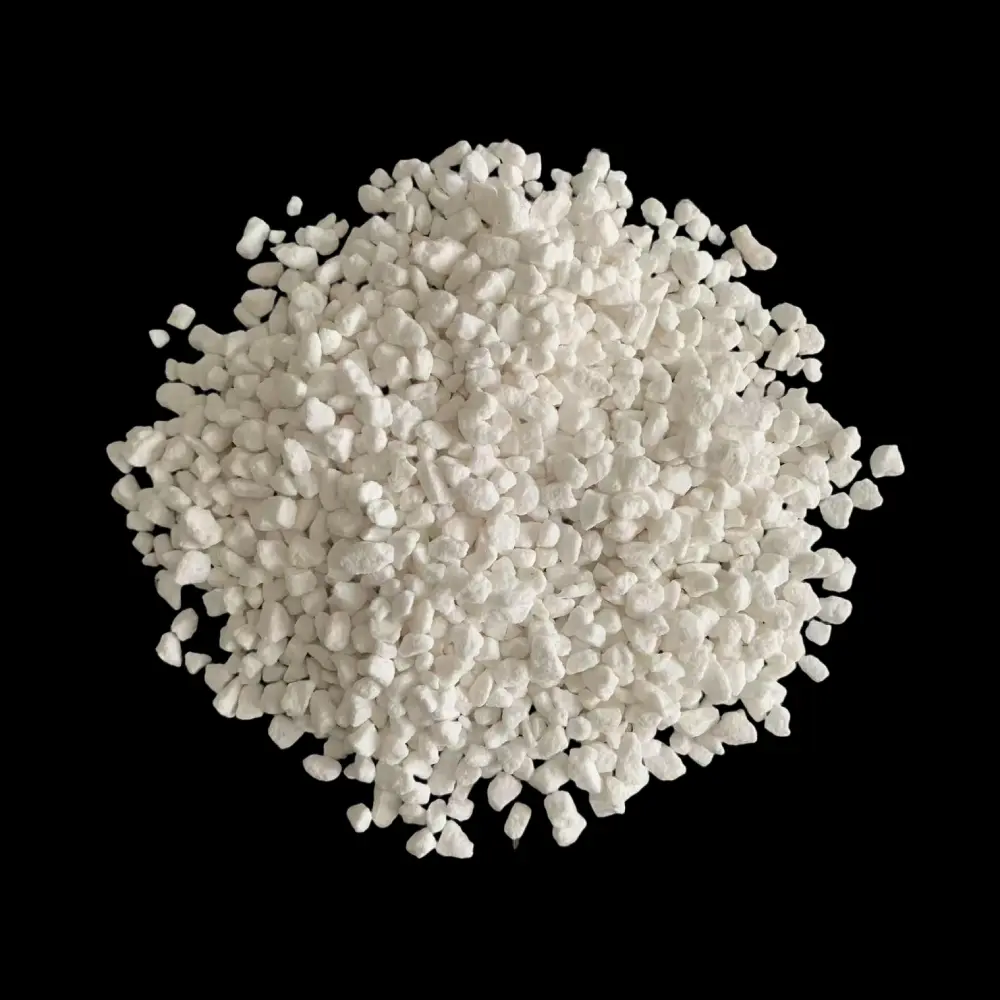When shopping for ice melt, you've likely noticed a significant price difference: Calcium Magnesium Acetate (CMA) often carries a higher price tag than conventional options like rock salt or calcium chloride. This initial cost can be a hurdle. However, the reason for this premium isn't arbitrary—it's rooted in a more complex chemistry, a rigorous production process, and a fundamental commitment to environmental safety. In this article, we will break down the exact cost factors behind CMA production to show you why it's a valuable investment for long-term winter management.

The Core Chemistry: Premium Raw Materials
At its heart, CMA's cost begins with its foundational ingredients, which are inherently more expensive than those of traditional deicers.
- Traditional Deicer Ingredients: Common rock salt (sodium chloride) is mined from abundant salt deposits, a relatively straightforward and low-cost process. Calcium chloride is often a by-product of other chemical processes, which also helps keep its raw material cost down.
-
CMA's Key Components: CMA requires two specific, high-purity raw materials:
- Dolomitic Lime: This special type of limestone, rich in both calcium and magnesium, must be quarried and then processed in a kiln at high temperatures to create quicklime, an energy-intensive first step.
- Glacial Acetic Acid: Unlike the dilute acetic acid in household vinegar, the industrial-grade acetic acid used for CMA is a highly pure and refined chemical. Its production is complex, and its price is subject to volatility in the petrochemical market.
The quality and cost of these primary inputs set the stage for CMA's final price, reflecting a foundation built on purity and specific chemical properties not required for cheaper alternatives. For a deeper look at how these materials translate into performance, see our analysis in
The Energy-Intensive Production Process
Transforming these raw materials into the final CMA pellets involves a multi-step, energy-intensive manufacturing process that constitutes a significant portion of its cost.
- Step 1: Lime Calcination and Slaking: The quarried dolomitic lime is first calcined (heated to very high temperatures) in a kiln to produce quicklime. This quicklime is then mixed with water in a controlled reaction called "slaking" to create a milk-of-lime slurry. The calcination step alone is a major energy consumer.
- Step 2: Neutralization Reaction: The lime slurry is carefully reacted with glacial acetic acid. This is a neutralization reaction that must be meticulously controlled for temperature, concentration, and pH to ensure a consistent and high-quality product, requiring sophisticated equipment and monitoring.
- Step 3: Evaporation and Drying: The result of the reaction is a liquid solution of Calcium Magnesium Acetate. To create the solid pellets or powder you buy, this solution must undergo massive water removal through evaporation, followed by spray-drying or drum-drying. This drying phase is the single most energy-intensive part of the entire process.
In stark contrast, rock salt primarily requires only crushing and screening, a fraction of the energy input. For a direct comparison of how these production differences affect performance, check out
The Hidden Costs of Being "Green"
CMA's status as an environmentally friendly alternative isn't just a claim; it's backed by significant investment in compliance, testing, and responsible manufacturing, which adds to its cost.
- Environmental Management & Compliance: CMA production facilities must invest heavily in advanced wastewater treatment and air emission control systems to ensure the manufacturing process itself minimizes environmental impact. The construction, operation, and maintenance of this infrastructure are costly.
- Third-Party Certification & Testing: To legitimately market CMA as "biodegradable" and "non-toxic," manufacturers must pay for independent, third-party laboratories to conduct rigorous ecotoxicity tests and obtain relevant environmental certifications. These are ongoing costs that producers of salt do not incur.
- Research & Development: Continuous investment in R&D is required to improve production efficiency, reduce the environmental footprint of the process itself, and enhance the product's performance.
These "hidden costs" are a direct investment in the verified eco-friendly profile that makes CMA a responsible choice. To understand the full scope of these benefits, we detail them in
Justifying the Investment: Total Cost of Ownership
While the upfront price per bag or ton of CMA is higher, a true cost assessment requires looking at the Total Cost of Ownership (TCO). From this perspective, CMA often proves to be a more economical and wise long-term investment.
- Infrastructure Protection: This is the single biggest factor in the TCO equation. CMA is non-corrosive, causing minimal damage to concrete, rebar, vehicles, and bridge structures. Switching to CMA can save municipalities, airports, and property owners hundreds of thousands, if not millions, of dollars in repair and replacement costs over time. The cost of repeatedly repaving a salt-damaged parking lot or repairing a corroded bridge far exceeds the initial savings from using cheap salt.
- Environmental Damage Avoidance: By preventing soil salinization and water contamination, CMA helps avoid costly environmental remediation projects, fines for regulatory non-compliance, and damage to landscaping.
- Enhanced Safety & Liability Reduction: CMA is less irritating to skin and paws than chlorides, and its non-toxic nature reduces risks to pets, wildlife, and vegetation, potentially lowering liability concerns.
When you factor in the dramatically lower corrosion and infrastructure damage, the long-term financial benefits become clear. The initial premium paid for CMA is an investment that pays dividends by preserving your valuable assets. For a direct cost and performance comparison with other products, read
Conclusion: Paying for Performance and Protection
The higher price of Calcium Magnesium Acetate is not a marketing ploy; it is a direct reflection of its superior raw materials, energy-intensive production, and verified environmental safeguards. Choosing CMA is not merely a purchase—it is a strategic investment in the longevity of your infrastructure, the health of your local ecosystem, and a safer winter for everyone.
Ready to Experience the CMA Advantage?
When you choose CMA, you're investing in superior performance and protection. At XRD Chemical, we are committed to maximizing this value for our customers. Our advanced formulation of Calcium Magnesium Acetate is engineered for exceptional efficiency and minimal environmental impact. Leveraging our state-of-the-art production facilities and optimized processes, we guarantee not only top-tier product quality but also reliable, large-scale availability. Whether you are a municipality, distributor, or commercial enterprise, you can count on our robust supply chain for fast order fulfillment and rapid delivery. Choose XRD Chemical's CMA – where proven performance meets unparalleled supply reliability for your winter management needs.
Calcium Magnesium Acetate CMA Ice Melt 96% 98% 99% Industry Grade 76123-46-1
- Model NO.: Calcium magnesium acetate
- CAS No.: 76123-46-1
- Formula: CaMg₂(CH₃COO)₆
- Payment: L/C, T/T, D/P, D/A, etc.
- Production capacity: 20000 t/y
- Customization: Available









